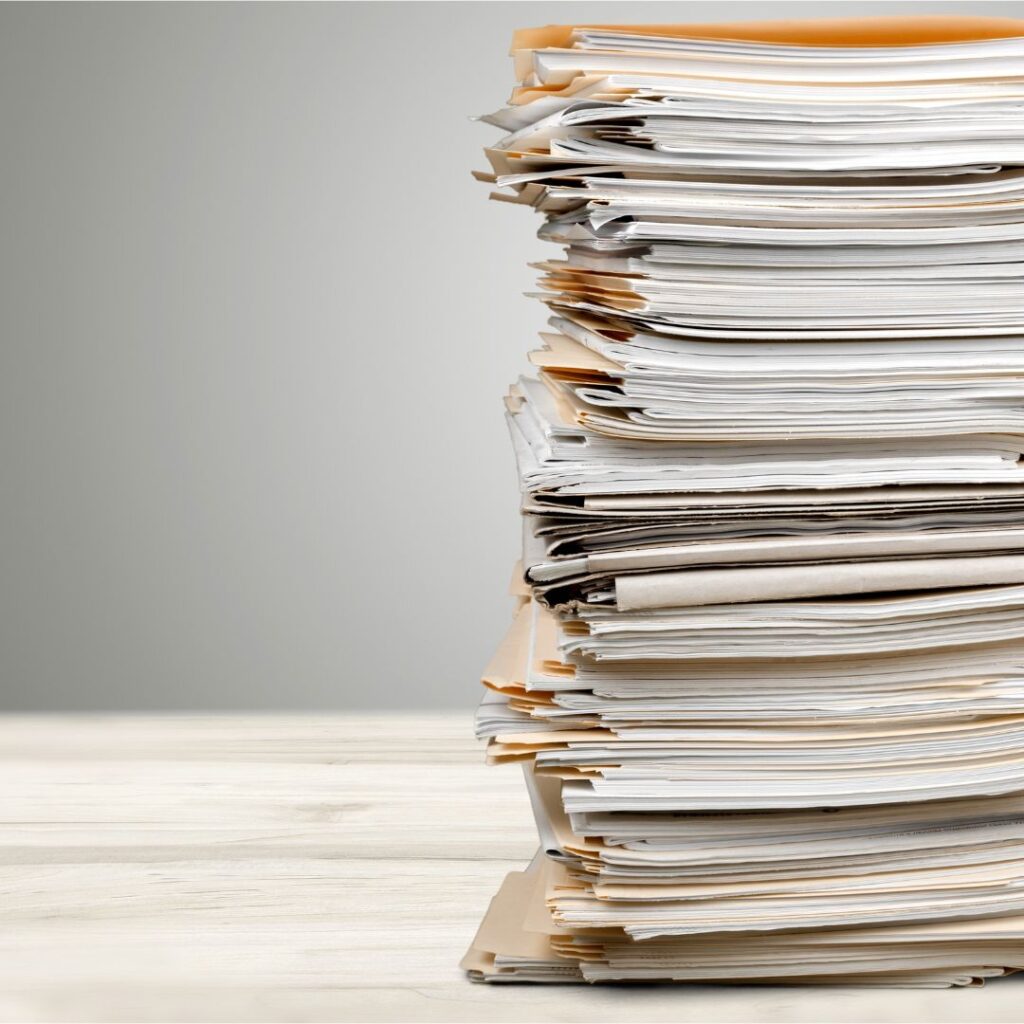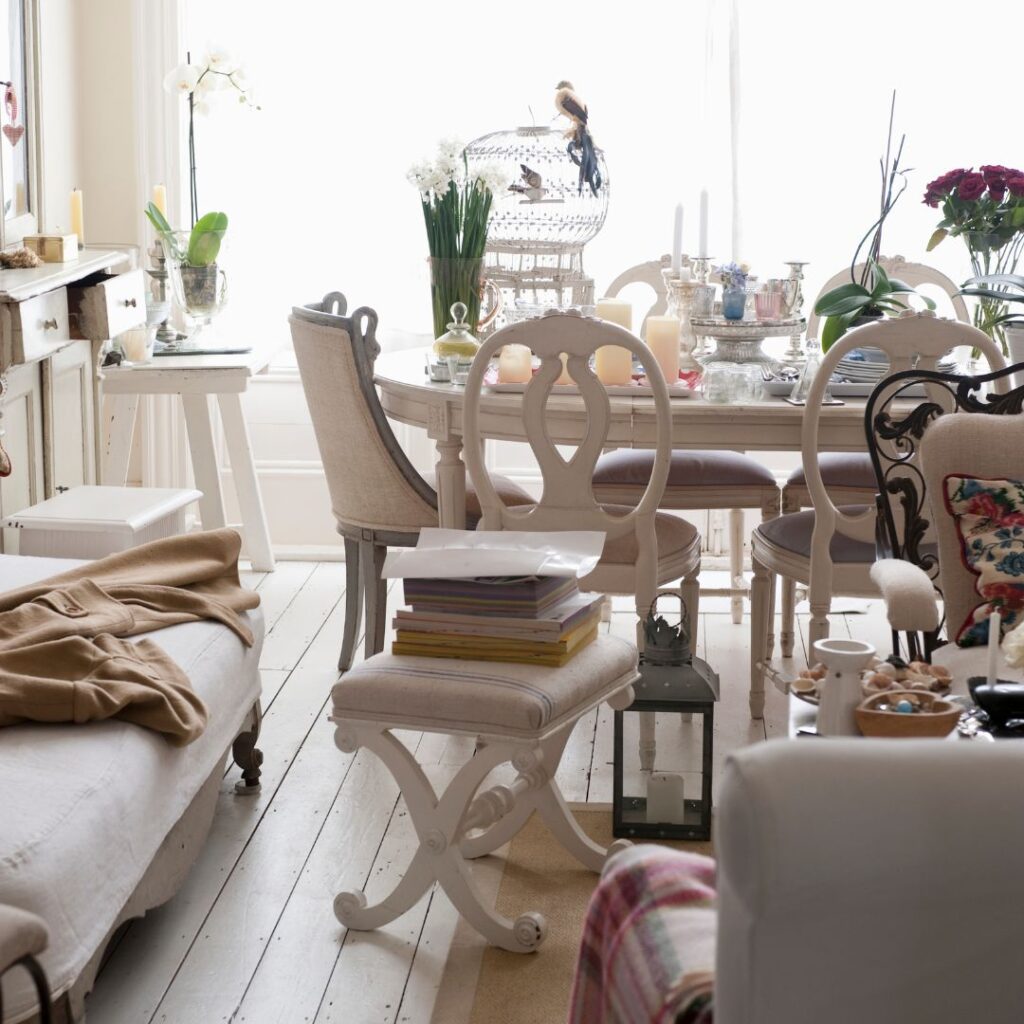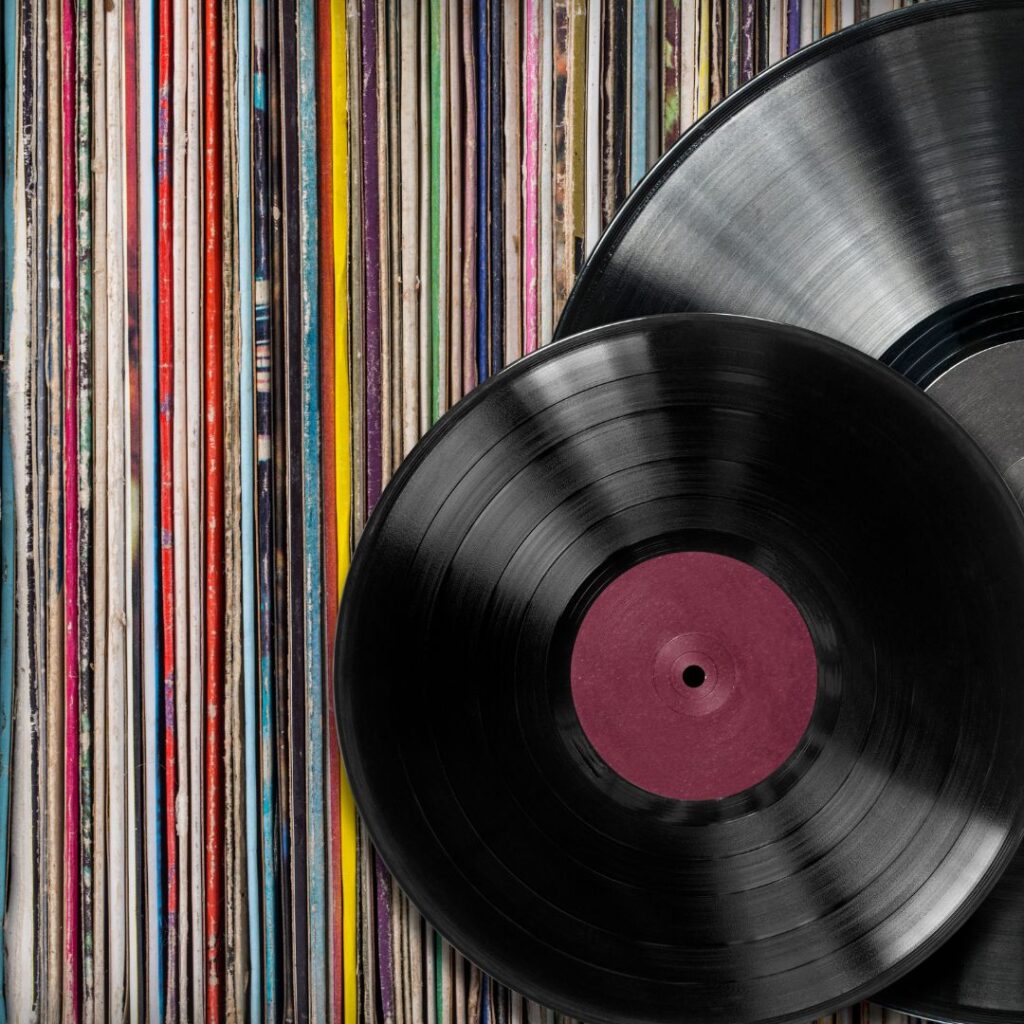CLUTTER, TRAUMA, HOARDING

Tanisha Lyons-Porter is a professional organizer based in Los Angeles who founded her company, www.naturalbornorganizers.com, in 2013. Her sunny smile and genuinely kind approach help make the prospect of de-cluttering less daunting.
“I don’t want to offend, but I do want to agitate,” she will often say on Instagram @naturalbornorganizers, averting her eyes from the direct gaze of the camera out of politeness. “No judgment; I’m here to agitate you into action.”
While her practice and workshops embrace all demographics, Lyons-Porter says, “Age, meaning being 50 plus, brings with it some specific challenges to keeping your home environment organized, peaceful, and functioning happily.” She cites several situations common in later life:
- Retirement from a job outside the home (coupled with post-COVID work-from-home and hybrid work arrangements)
- Divorce, or loss of a spouse
- Relocation and downsizing
- Varying degrees of loss of mobility, dexterity, agility, acuity (i.e. vision or hearing loss) and physical strength
- Empty-nesting, or…
…just the opposite. These days, we are seeing adult children moving back in with moms because the economic situation is rough out there. So, a woman in her golden years may suddenly find herself making room for another generation, or even two, meaning an adult child and potentially that child’s partner and kids, in the spare bedroom she had planned to use as the art studio or prayer-meeting space she’d been dreaming about for decades.
Other generational elements also factor in. Baby Boomers grew up in the world of the papertrail. We are the FAX generation! We still often print things out because that hard-copy record makes us feel more comfortable than a digital receipt. While Tanisha judges not, she does warn that paper creates a weather system of its own if not tightly managed, and encourages her clients to go paperless when paying bills, to the degree possible. This is especially good advice for those of us who worked off-site until COVID and now conduct business from our homes.

“Let’s start with the unopened mail, that stuff piling up on the kitchen island. Junk mail. Every piece of mail adds 3 to 5 tasks to your day. You have to open the envelope, read it, file it, or then shred it, discard it.” While the business world is definitely moving from paper to vapor, many Boomers find themselves overwhelmed with a daily onslaught of magazines, catalogs, coupon packets for stuff you never buy, solicitations from local businesses, flyers, and other forms of paper waste. Tanisha’s Tip for 2023: “If you don’t know where to start, throw away the trash.”
Even if your home includes rooms in need of a complete reorganization and deep cleaning, one easy step is the daily search-and-destroy. Every morning or evening, grab a paper bag and check every room for actual trash: last week’s newspaper, junk mail you don’t even need to open, snack wrappers, food containers, anything broken (Tanisha recently parted with her beloved Howard University key ring because it was beyond repair!), and of course anything single-use and disposable, like a soiled paper plate, paper towel, or paper napkin.
Then do a quick scan of the kitchen and fridge. Give everything the sniff test. Is that leftover takeout a little past its prime? Expired milk? Sad, wilted lettuce? Shriveled apples? Out they go. Something that those of us in our glory years need to remember is that we usually aren’t shopping and cooking for a crowd anymore, or at least not as often. So, we may unconsciously buy more food than we really need, and some of it may spoil before we can enjoy it. Check your own usage and make a note not to routinely buy the 12-pack of chicken thighs (or whatever) simply because you’re on autopilot.
Make all of the above a daily practice, even when your closets and cupboards are brimming with what Tanisha calls “stuff to get rid of-ish.” Just the act of regularly looking around each room for items that can be tossed is the first important step toward creating and maintaining order. On Instagram, Tanisha encourages what she calls “30-minute sprints,” where you quickly spot, snag and trash unwanted items, then straighten what’s left, all within a half-hour. Again, small steps can chip away at the larger, unfinished tasks and are good training for making discarding and organizing a regular part of your routine.

She says, “The goal is learning how to keep less than your living space will actually contain. Your home is more than storage. It’s a space for you to rest, love, work, create, and make memories. I help people get unstuck so that they can fall in love with their homes again. First, I help people understand the cost of their stuff, meaning the actual mental, emotional and financial currency they are paying to hang on to their stuff, in the form of guilt, sadness, and often fear of the unknown, fear of what will happen next. When you look at the cost per square foot, those feelings get expensive, and the sheer volume of the stuff can quickly become overwhelming.”
Other “costs” associated with clutter include embarrassment, as in not wanting people to come to your home “until it’s cleaned up.” This easily leads to social isolation and a deepening sense of shame. Depression may also play a role. One’s home may become an unsorted obstacle course of accumulation as a reflection of depression, and clutter itself magnifies unprocessed, unresolved feelings of paralyzing helplessness and anxiety — the proverbial vicious circle.

DO YOU FIND YOURSELF WITH TOO MANY CLOTHES?
Wardrobe is a prime example. A woman who worked for decades in the corporate world may have an array of prim dresses, suits, and heels that don’t really fit her post-retirement life. Idea: just about every city in America is home to a non-profit organization that welcomes donations of used professional attire for women who need a hand up as they re-enter the workforce from homelessness, rehab, or incarceration. Donate-to-Cabin-Lane
If a woman has lost her mate, those clothes left behind by the beloved also deserve a second life, and will be enjoyed by someone who needs them. Of course, save that favorite shirt because it reminds you of the good old days. Save those cufflinks, reminders of so many elegant evenings out with the one you loved. Cherish that single, hand-knit argyle sock with a hole in the toe, also missing its mate, raggedy though it may be, just because. “One thing I really do like about Marie Kondo,” says Tanisha referencing the minimalistic space-making guru, “is that her focus is on the joy around the things we do keep while expressing fondness and gratitude for all of the other things that we’re releasing.” But consider releasing the rest of that overstuffed closet-full of items that are now simply sucking up air in your precious space.
In terms of size and style, if your closet is filled with items that have been too big or too small (how did THAT happen? Darn things musta shrunk in there!) for more than a year– okay, more than two years– question whether or not these items deserve to stay. How do they earn their keep? The same goes for styles that are now less than stylin.’ Case in point: jackets with giant padded shoulders or crazy lapels. If you love ’em, wear ’em. But if not, cut the past loose.
CONSIDER A MUSIC MAKEOVER
And can we just say sides, as in LPs? We don’t know anyone who doesn’t love music, and every decade provided a soundtrack to places in the heart– the joy and laughter, the bad break-ups, the breakthroughs, nervous moves, long nights of studying, morning-sickness, anniversaries, celebrations, the bittersweet farewells. Every step on the journey has its song, but the fact is that these songs live on forever in iCloud, Spotify, and other digital platforms today. And those boxes of albums weigh a ton. If they’ve been out in the garage, where moth and dust doth corrupt, since Obama was in office or before, chances are they’re not in great listening shape anyway.
One streamlining approach is to devote a full day, with coffee, cookies, a notepad and pencil, and the support of a friend or two, to flip through your collection and write down individual songs or entire albums that you simply MUST have access to. This also applies to CDs, cassettes, and 8-tracks (remember those?) Then, reach out to the tech geek in your tribe– no doubt there are many. Engage this skilled person to create a master audio directory of all of your favorite cuts, most likely pulling them from pristine digital files rather than your actual albums.
In advance, discuss with your tech how you intend to listen to your playlists (on your laptop, phone, etc.) Have your tech save the complete files onto a couple of thumb drives or dongles (keep these in a safe place, like your safety deposit box). Once you feel secure in the fact that you’ve got your music signed, sealed, and delivered in digital form, it’s time to bequeath those heavy boxes to a local thrift store, community flea market, or yard sale. The truth is that a digital file will make it much easier to locate and listen to your favorites, a giant benefit of new technology over old.

By the way, while it is true that occasionally a vintage LP will fetch enough to buy you your own tropical island, this is extremely rare. Your treasured music collection probably will retail for somewhere in the vicinity of a skinny latte and a bran muffin. But do it anyway, enjoy that latte and muffin, and reclaim that dang space! And breathe a sigh of relief that you won’t have to pay big bucks to have hundreds of pounds of scratched vinyl packed, stacked and racked next time you move.
THE PARTY’S FAR FROM OVER — IT’S JUST DIFFERENT
Another major adjustment for many women past 50 is the notion of entertaining. Many of us cooked big Sunday dinners weekly, and holiday feasts were a seasonal tradition. This meant lots of cookware, serving dishes, and decorations. Life changes for many of us, and if you’re no longer hosting the huge Thanksgiving, Christmas and Easter galas, take a hard look at what’s in your cabinets, pantry and garage. Seriously. How long has it been since you decorated an 8-foot Christmas tree? If it’s been a minute, maybe someone else in your circle will find new joy in those boxes of fragile ornaments (keep that vintage star tree-topper for your sentimental self).
Something else you can probably ditch, according to Miss Tanisha: those hard copy (i.e., a notebook) planners, day-runners, and journals that you purchase for yourself each year with high hopes of finally getting organized, or are gifted to you by well-meaning loved ones. Tanisha observes that generally, people have several planners and rarely fill them. Her advice: if you like the idea of using a planner, use only one, and make a serious effort to fill it to at least 80 percent capacity.
Mark your calendars!
“Every object in your home is tied to a feeling. Sometimes, allowing clutter to get out of control can be a kind of situational, PTSD-like response to loss, trauma, and anger. Depending upon what’s happening in the family, gathering and holding stuff around you can be a way of holding onto a memory, even the memory of a failure or major disappointment,” says Tanisha. When the prospect of examining, sorting, grouping, discarding and re-arranging proves painful, Tanisha recommends calling in an outside professional to push through the feelings that stand in the way of decisive action. “We often get into trouble on our own when we’re not flexible and won’t adjust our pattern to the way things really are now,” she says. “We all resist change. And our lack of flexibility allows our space to fill up to the point where we can’t find anything, can’t move, can’t breathe.” Tanisha helps clients break the gridlock, acknowledging that for most people, “It’s scary even to start.”
It’s okay, by the way, to have collections. A collection, by definition, is grouping similar, related things together. So, if you love your seashells and all of the memories of heart-melting Caribbean sunsets that they invoke, give them a place of honor. Clear off a bookshelf — donate those dozens of books you won’t read again — and maybe try a recessed lighting strip to show off their amazing shapes and colors. Can’t part with the family silver? Also fine. Haul it out, polish it once a month, use it every day: it was MADE to be used. Yes, mac and cheese tastes even better on grandma’s fine china.
“We’re afraid of emptiness,” she says Tanisha, referencing the loneliness that may face us in mid-life and later. “I tell my clients that negative space is not negative at all. It’s just open space and an opportunity to begin something new.”
Tanisha’s golden rule: cut yourself some slack and give yourself grace. Marie Kondo won’t be stopping by any time soon to inspect your sock drawer. Start by getting into the habit of discarding actual trash daily. Then begin evaluating what items and objects in your home are no longer serving your present needs, starting with periodicals (magazines, newspapers) which now are 100 per cent archived online. By clearing away the material residue of lingering emotions, we create an opening for something new. And in this way, having less becomes a way of discovering more.
#
To learn more about Tanisha’s work or to book a session, visit:
Be the first to comment